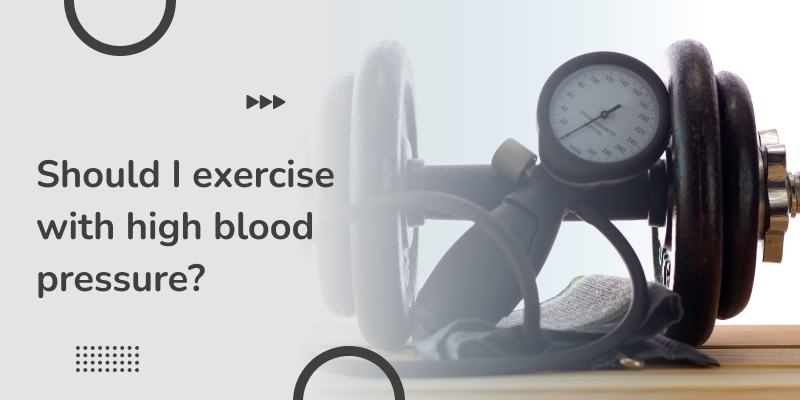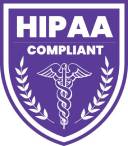
Exercising with High Blood Pressure: A Balanced Approach
If you're worried about your high blood pressure and wondering if exercise is safe for your heart, you're not alone. The good news is that regular physical activity can be beneficial for hypertension by helping your heart work more efficiently and potentially reducing the need for medication.
However, it's important to know which exercise types are safe and effective for your heart health and which ones to avoid. Understanding the connection between exercise and blood pressure can keep your arteries healthy and improve your overall well-being.
Hypertension & Physical Activity: What’s the Connection?
Regular exercise is crucial for managing high blood pressure. Physical activity provides numerous benefits and is essential for managing hypertension. Exercise strengthens your heart, which ultimately helps it pump blood more efficiently, lowering artery pressure. For some individuals, consistent physical activity can even reduce their need for medication.
However, it's important to understand both the advantages and potential risks of exercising. While exercise is typically safe for most people, those with high blood pressure should steer clear of high-intensity or rapid heart rate workouts, as they can be dangerous and potentially lead to health complications.
To exercise safely with high blood pressure, it is advisable to:
- Start slowly and gradually increase the intensity over time.
- Engage in moderate aerobic activities that do not strain your heart.
- Do thirty minutes of workout at least five times a week.
- Aim for 150 minutes of moderate aerobic activity every week. You can divide it into short sessions if necessary.
This gradual approach helps prevent sudden blood pressure surges that can lead to health issues.
Studies back the benefits of physical activity on hypertension. Research shows that people who add moves to their week can see their pressure drop. It is key to watch your heart health, including your resting heart rate, as it gives clues to how your heart system responds to exercises.
Always consult your doctor before starting a new workout routine, especially if you have a history of high blood pressure or have been inactive for a long time. They can help you set safe limits and create a plan that gradually increases your activity level without overworking your organs. As you add these safe practices, you will see a gradual improvement in your blood pressure.
At the same time, it is equally important to keep track of other heart health indicators and avoid overexertion. It is essential to be aware of any exercises that may pose a risk to your health and take a safe and cautious approach to managing your condition.
Identifying the Risk Factors of Exercising With High Blood Pressure
Before starting any exercise, knowing which moves can be risky for individuals with high blood pressure is important.
Exercise-induced hypertension is a major worry. If you experience a significant increase in pressure during physical activity, and it does not return to normal levels when resting, you should seek medical attention immediately. Symptoms such as severe headaches, difficulty breathing, or irregular heartbeat during or after exercise could indicate serious health issues.
Regular cardiac screenings can reveal your heart’s status and guide you to safer exercise options. This insight leads to safer workout practices that help you manage pressure without risking your health.
Safe Exercise Guidelines for Hypertensive People
If you have high blood pressure, you might wonder whether exercising is safe and how to do it properly. The good news is that physical activity can be a great ally in your journey towards better health. Let's look at some guidelines to ensure that your exercise plan is safe and effective.
- Begin Slow: Focus on slowly increasing the pace of your workouts over time. This lets your heart adapt and get strong without too much stress.
- Pick the Right Moves: Some exercises work on your biggest muscle groups and raise your heart rate and breathing just right, which is good for your heart.
- Set Realistic Goals: Aim for short, frequent sessions rather than long, hard workouts. Begin with a goal of a 10-minute walk thrice a day, and increase the time as your fitness gets better.
- Engage in Fun Exercises: Pick workouts that you enjoy, be it a dance class, swim, or a park stroll. When workouts are fun, they do not feel like hard work, and you will likely stick with them.
- Watch Your Vitals: Monitoring your vitals is key to managing high blood pressure, and technology can be a big help. Tracking your health vitals is now easier with tools like REAN HealthGuru, which allows you to understand how your new exercise plan affects your blood pressure.
With these tips and health-tracking technology, you are on your way to a healthier life that includes safe and fun moves.
How to Monitor Blood Pressure When Exercising
Using an auto pressure cuff can help you track your blood pressure levels before and after your workout. This device lets you monitor how your body responds to exercises and if your routine is lowering your pressure.
You should rethink your activities if your readings are too high during or after working out. You might need to change the pace or talk with a health professional to ensure you exercise safely.
By making these changes, you are ensuring your safety and setting yourself up for a heart-healthy life that you can maintain over time.
Also, read Digitization of Health Data for insights on how tech can boost your health care, especially in grasping your pressure response to exercises.
Best Exercises for High Blood Pressure Management
Regardless of your type of workout, remember to start with a 5-minute warm-up session to prepare your body and end with a cool-down to prevent any sudden heart rate changes, especially if you are on medication for high blood pressure.
The Impact of Aerobic Activities on Blood Pressure
Aerobic moves can help manage high blood pressure. Brisk walks, biking, and swimming make your heart stronger and more efficient, which can lead to lower pressure.
It is important to engage in exercises that target your arms and legs. These exercises can help elevate your heart rate and breathing, which is necessary for strengthening your heart. When performed correctly, incorporating strength exercises into your routine can also enhance your cardiovascular fitness. However, it's crucial to exercise caution while performing strength exercises, especially if you have high blood pressure.
Strength Training with High Blood Pressure: Dos and Donts
Although strength training has numerous health benefits, it is crucial to be cautious and avoid exercises that could cause sudden spikes in your blood pressure.
- To ensure your safety, focus on moderate-intensity strength exercises and breathe evenly during each move.
- Avoid using heavy weights that require straining or holding your breath. Instead, opt for lighter weights with more repetitions.
- Try incorporating other strength exercises that are less likely to cause sudden blood pressure spikes. For instance, band exercises, bodyweight exercises such as squats and push-ups, and some yoga poses can help strengthen your muscles without putting too much stress on your cardiovascular system.
Which Exercises to Avoid with High Blood Pressure
If you have hypertension, it's best to avoid exercises that pose a significant risk, such as:
- weightlifting, which can lead to quick pressure jumps.
- Sprinting, which can cause pressure spikes.
- Squash, which can increase your BP because of the intensity.
- Skydiving and SCUBA diving, which can cause quick pressure jumps.
- High-Intensity Interval Training or HIIT, which can cause quick changes in pressure.
By avoiding certain activities, you can better care for your heart and maintain a safe exercise routine, which will contribute to your overall good health.
Empowering Your Health Journey with Safe Exercise
Engaging in smart, moderate exercise not only strengthens your heart but also helps to control your blood pressure. Remember that this is just the beginning of your journey towards better health. By prioritizing your well-being and making healthy choices daily, you can further improve your heart health and overall quality of life.
With REAN Foundations smart tools, like the REAN HealthGuru app, you can monitor your progress and modify your routine from home to achieve the best heart health. Start your journey to better health with REAN Foundation, and together, we can contribute to the innovation and caring that shape the future of health care.
If you're worried about your high blood pressure and wondering if exercise is safe for your heart, you're not alone. The good news is that regular physical activity can be beneficial for hypertension by helping your heart work more efficiently and potentially reducing the need for medication.
However, it's important to know which exercise types are safe and effective for your heart health and which ones to avoid. Understanding the connection between exercise and blood pressure can keep your arteries healthy and improve your overall well-being.
Hypertension & Physical Activity: What’s the Connection?
Regular exercise is crucial for managing high blood pressure. Physical activity provides numerous benefits and is essential for managing hypertension. Exercise strengthens your heart, which ultimately helps it pump blood more efficiently, lowering artery pressure. For some individuals, consistent physical activity can even reduce their need for medication.
However, it's important to understand both the advantages and potential risks of exercising. While exercise is typically safe for most people, those with high blood pressure should steer clear of high-intensity or rapid heart rate workouts, as they can be dangerous and potentially lead to health complications.
To exercise safely with high blood pressure, it is advisable to:
- Start slowly and gradually increase the intensity over time.
- Engage in moderate aerobic activities that do not strain your heart.
- Do thirty minutes of workout at least five times a week.
- Aim for 150 minutes of moderate aerobic activity every week. You can divide it into short sessions if necessary.
This gradual approach helps prevent sudden blood pressure surges that can lead to health issues.
Studies back the benefits of physical activity on hypertension. Research shows that people who add moves to their week can see their pressure drop. It is key to watch your heart health, including your resting heart rate, as it gives clues to how your heart system responds to exercises.
Always consult your doctor before starting a new workout routine, especially if you have a history of high blood pressure or have been inactive for a long time. They can help you set safe limits and create a plan that gradually increases your activity level without overworking your organs. As you add these safe practices, you will see a gradual improvement in your blood pressure.
At the same time, it is equally important to keep track of other heart health indicators and avoid overexertion. It is essential to be aware of any exercises that may pose a risk to your health and take a safe and cautious approach to managing your condition.
Identifying the Risk Factors of Exercising With High Blood Pressure
Before starting any exercise, knowing which moves can be risky for individuals with high blood pressure is important.
Exercise-induced hypertension is a major worry. If you experience a significant increase in pressure during physical activity, and it does not return to normal levels when resting, you should seek medical attention immediately. Symptoms such as severe headaches, difficulty breathing, or irregular heartbeat during or after exercise could indicate serious health issues.
Regular cardiac screenings can reveal your heart’s status and guide you to safer exercise options. This insight leads to safer workout practices that help you manage pressure without risking your health.
Safe Exercise Guidelines for Hypertensive People
If you have high blood pressure, you might wonder whether exercising is safe and how to do it properly. The good news is that physical activity can be a great ally in your journey towards better health. Let's look at some guidelines to ensure that your exercise plan is safe and effective.
- Begin Slow: Focus on slowly increasing the pace of your workouts over time. This lets your heart adapt and get strong without too much stress.
- Pick the Right Moves: Some exercises work on your biggest muscle groups and raise your heart rate and breathing just right, which is good for your heart.
- Set Realistic Goals: Aim for short, frequent sessions rather than long, hard workouts. Begin with a goal of a 10-minute walk thrice a day, and increase the time as your fitness gets better.
- Engage in Fun Exercises: Pick workouts that you enjoy, be it a dance class, swim, or a park stroll. When workouts are fun, they do not feel like hard work, and you will likely stick with them.
- Watch Your Vitals: Monitoring your vitals is key to managing high blood pressure, and technology can be a big help. Tracking your health vitals is now easier with tools like REAN HealthGuru, which allows you to understand how your new exercise plan affects your blood pressure.
With these tips and health-tracking technology, you are on your way to a healthier life that includes safe and fun moves.
How to Monitor Blood Pressure When Exercising
Using an auto pressure cuff can help you track your blood pressure levels before and after your workout. This device lets you monitor how your body responds to exercises and if your routine is lowering your pressure.
You should rethink your activities if your readings are too high during or after working out. You might need to change the pace or talk with a health professional to ensure you exercise safely.
By making these changes, you are ensuring your safety and setting yourself up for a heart-healthy life that you can maintain over time.
Also, read Digitization of Health Data for insights on how tech can boost your health care, especially in grasping your pressure response to exercises.
Best Exercises for High Blood Pressure Management
Regardless of your type of workout, remember to start with a 5-minute warm-up session to prepare your body and end with a cool-down to prevent any sudden heart rate changes, especially if you are on medication for high blood pressure.
The Impact of Aerobic Activities on Blood Pressure
Aerobic moves can help manage high blood pressure. Brisk walks, biking, and swimming make your heart stronger and more efficient, which can lead to lower pressure.
It is important to engage in exercises that target your arms and legs. These exercises can help elevate your heart rate and breathing, which is necessary for strengthening your heart. When performed correctly, incorporating strength exercises into your routine can also enhance your cardiovascular fitness. However, it's crucial to exercise caution while performing strength exercises, especially if you have high blood pressure.
Strength Training with High Blood Pressure: Dos and Donts
Although strength training has numerous health benefits, it is crucial to be cautious and avoid exercises that could cause sudden spikes in your blood pressure.
- To ensure your safety, focus on moderate-intensity strength exercises and breathe evenly during each move.
- Avoid using heavy weights that require straining or holding your breath. Instead, opt for lighter weights with more repetitions.
- Try incorporating other strength exercises that are less likely to cause sudden blood pressure spikes. For instance, band exercises, bodyweight exercises such as squats and push-ups, and some yoga poses can help strengthen your muscles without putting too much stress on your cardiovascular system.
Which Exercises to Avoid with High Blood Pressure
If you have hypertension, it's best to avoid exercises that pose a significant risk, such as:
- weightlifting, which can lead to quick pressure jumps.
- Sprinting, which can cause pressure spikes.
- Squash, which can increase your BP because of the intensity.
- Skydiving and SCUBA diving, which can cause quick pressure jumps.
- High-Intensity Interval Training or HIIT, which can cause quick changes in pressure.
By avoiding certain activities, you can better care for your heart and maintain a safe exercise routine, which will contribute to your overall good health.
Empowering Your Health Journey with Safe Exercise
Engaging in smart, moderate exercise not only strengthens your heart but also helps to control your blood pressure. Remember that this is just the beginning of your journey towards better health. By prioritizing your well-being and making healthy choices daily, you can further improve your heart health and overall quality of life.
With REAN Foundations smart tools, like the REAN HealthGuru app, you can monitor your progress and modify your routine from home to achieve the best heart health. Start your journey to better health with REAN Foundation, and together, we can contribute to the innovation and caring that shape the future of health care.



